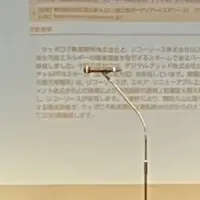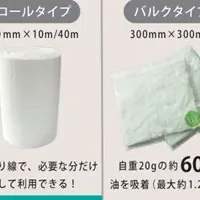
Innovative Dutch Invention Combines Art and Science to Remove CO2 Rapidly
Innovative Approach to Carbon Capture
In an inspiring blend of creativity and innovation, Dutch inventor Ap Verheggen has unveiled a groundbreaking method for reducing carbon dioxide (CO2) levels in the atmosphere. This remarkable technique is not only efficient but also incorporates elements of art and music, highlighting an unconventional approach to environmental challenges.
The Genesis of the Idea
The journey began with a sculpture commissioned by Deltares, a renowned independent knowledge and research institute based in Delft. Verheggen crafted an artistic installation resembling a tree, utilizing olivine, a mineral known for its CO2-absorbing properties. This artistic endeavor set the stage for further exploration into enhancing the efficiency of CO2 absorption.
During a collaboration with scientist Dr. Bob Hoogendoorn, who previously worked as a research supervisor at Deltares, they made a significant discovery: introducing air bubbles to olivine in water drastically accelerated the CO2 absorption process. Dr. Hoogendoorn expressed surprise at the speed of the results, noting how the combination proved more effective than expected.
The Role of Music and Vibrations
Taking their experiments to the next level, Verheggen and his team found that introducing musical tones and vibrations further enhanced the reaction, allowing the CO2 concentration in the air to diminish at an unprecedented rate. In one particular artwork involving olivine sand in water energized by sound vibrations, CO2 levels were reduced to zero in just 30 minutes—a staggering result.
Verheggen stated, “This shows that art and music can contribute to addressing major global challenges.” He aims to engage the youth positively into climate discussions, believing that art transcends barriers and can reignite hope in climate action.
The Technology Behind Carbon Vanish
To make this revolutionary technology accessible, Verheggen, together with expert Theo Bouts, established a company named Carbon Vanish. Their innovative approach can halve CO2 levels within hours. For instance, in measurable terms, carbon dioxide concentrations can fall from 411 parts per million (ppm) to 216 ppm, demonstrating the capacity of this method.
The process produces a chalk-like byproduct, which boasts uses in cement production and agricultural fertilization, ensuring that the results contribute positively to both the environment and industry.
Ap Verheggen: Artist and Inventor
Ap Verheggen, the brain behind this invention, is an artist residing in The Hague who is committed to merging art, science, and technology to tackle global challenges. His past projects, like the SunGlacier—a device designed to generate approximately 1,200 liters of water per day in arid conditions—have garnered attention worldwide, including at the World Expo in Dubai. Verheggen's artistic ventures extend into breathtaking sculptures displayed in locations such as West Greenland, coupled with a documentary titled IceBerg Riders that chronicles his experiences.
Conclusion
As climate change remains a pressing issue, initiatives like Carbon Vanish represent a promising direction for innovative solutions that combine creativity, scientific advancement, and community involvement. By employing art and music, Verheggen is not only tackling CO2 emissions but also creating a more relatable narrative that fosters inclusivity and hope within the conversation surrounding climate action.
To learn more about the impact of this incredible project, visit Stories of Purpose.
Topics Environment)










【About Using Articles】
You can freely use the title and article content by linking to the page where the article is posted.
※ Images cannot be used.
【About Links】
Links are free to use.